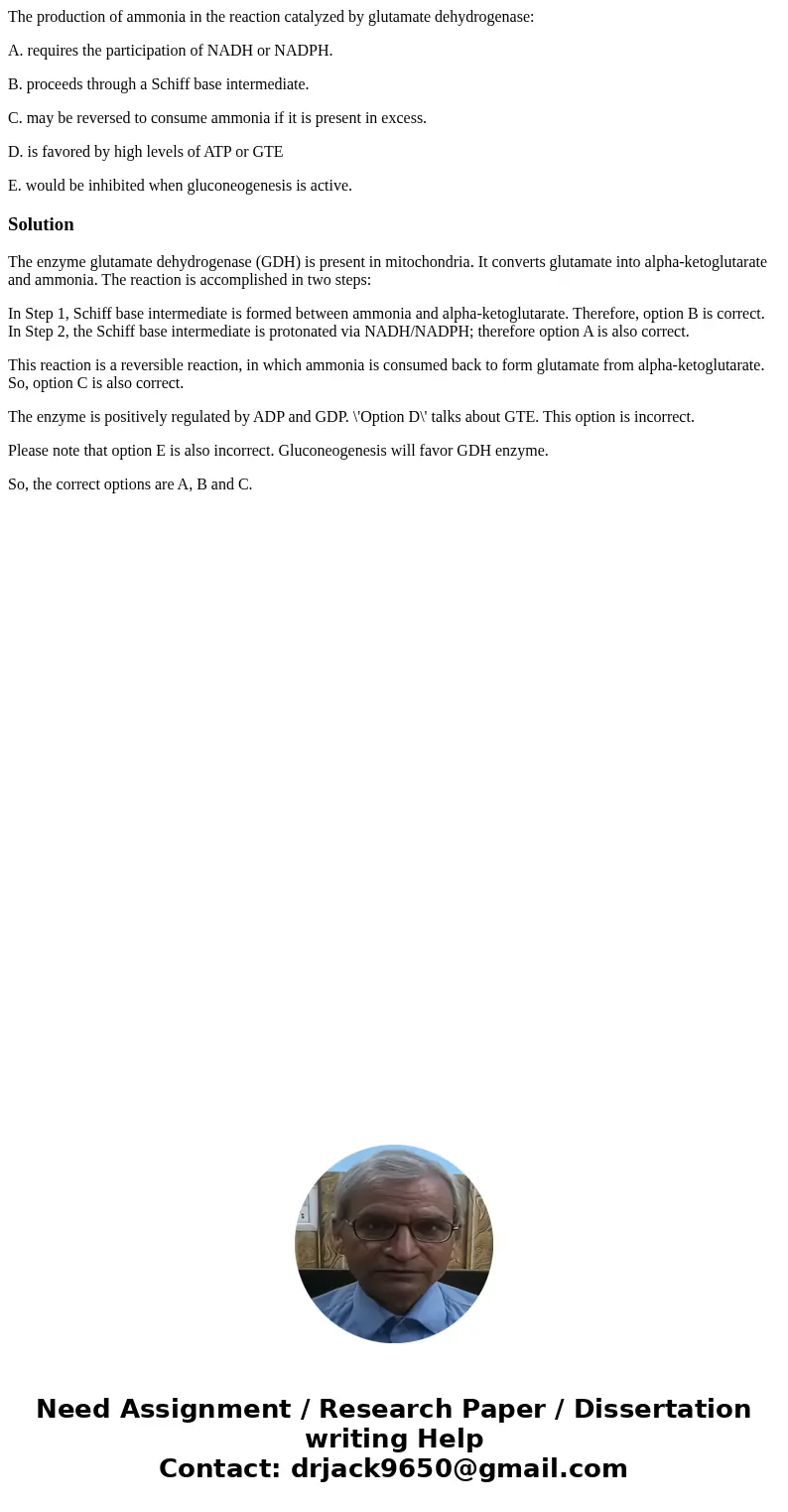The production of ammonia in the reaction catalyzed by gluta
The production of ammonia in the reaction catalyzed by glutamate dehydrogenase:
A. requires the participation of NADH or NADPH.
B. proceeds through a Schiff base intermediate.
C. may be reversed to consume ammonia if it is present in excess.
D. is favored by high levels of ATP or GTE
E. would be inhibited when gluconeogenesis is active.
Solution
The enzyme glutamate dehydrogenase (GDH) is present in mitochondria. It converts glutamate into alpha-ketoglutarate and ammonia. The reaction is accomplished in two steps:
In Step 1, Schiff base intermediate is formed between ammonia and alpha-ketoglutarate. Therefore, option B is correct. In Step 2, the Schiff base intermediate is protonated via NADH/NADPH; therefore option A is also correct.
This reaction is a reversible reaction, in which ammonia is consumed back to form glutamate from alpha-ketoglutarate. So, option C is also correct.
The enzyme is positively regulated by ADP and GDP. \'Option D\' talks about GTE. This option is incorrect.
Please note that option E is also incorrect. Gluconeogenesis will favor GDH enzyme.
So, the correct options are A, B and C.

 Homework Sourse
Homework Sourse